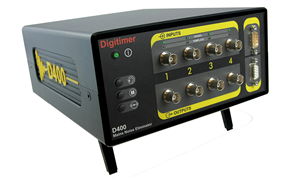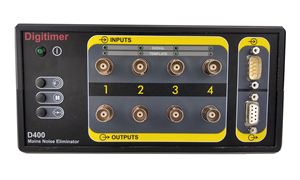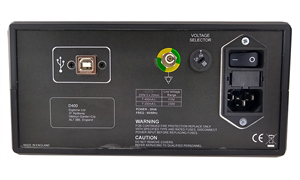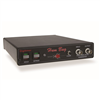The D400 Multi-channel 50/60Hz Mains Noise Eliminator is a standalone instrument designed for real-time removal of 50/60Hz mains noise interference, including harmonics, from amplified biological and other signals prior to acquisition by digital data recording systems. Unlike 50/60Hz notch filters, the D400 can eliminate mains noise without degrading the signal of interest, even if it overlaps with the mains frequency.
Rapidly evolving multi-channel mains noise removal
The D400 is unique as a multi-channel, standalone noise eliminator, which is not incoporated within and does not have to be used in conjunction with any specific electrophysiology data acquisition system. While the method of noise removal follows the principles of other single channel devices, such as the Quest Scientific Humbug Noise Eliminator, the hardware and software algorithms used by the D400 have been developed wholly by Digitimer and are unique to this device. For those unfamiliar with the concept of operation, the D400 receives amplified analogue voltage signals from an amplifier via its inputs and as these signals pass through the D400 noise eliminator remaining in the analogue domain, it rapidly constructs a phase-locked “mains noise template” and subtracts this from the original signal. Noise removal occurs in real-time and the noise template evolves constantly, so that any changes in the amplitude or other characteristics of the noise are corrected for.
Analogue signal path with zero distortion
Importantly, the signal pathway through the D400 is analogue throughout i.e. the input signals are not digitised at any point, thus preserving data integrity. Not only does the D400 remove mains noise in the 50Hz to 60Hz frequency, but it is also effective at removing associated harmonics of these frequencies. Importantly, and unlike standard mains Notch filters, this method of noise removal is not detrimental to signals of interest within the 50-60Hz frequency range.
Intuitive connection and control
The D400 is designed for ease of use and has very few controls. On the left of the front panel are three push buttons for Clear, Hold and Bypass, described below. To the right of these are multiple pairs of signal input and output connectors, as well as equivalent “D” connectors for all channels. Associated with the individual signal connectors are several LED indicators, which show the status of each channel.
CLEAR – A single press erases the existing noise template and the D400 begins to construct a new one. When this button is pressed, any mains noise present in the signal will re-appear and gradually decrease in amplitude as a new template is constructed
HOLD – This freezes the template so it no longer evolves with changes in the noise level. This may be useful in situations where the user needs to adjust some recording equipment and expects to transiently introduce noise. HOLD can be pressed again once the interruption has taken place, causing minimal disruption to the noise removal process. While the D400 is in the “Hold” mode, the Template LED’s turn RED.
BYPASS – This allows the user to see what the raw signal passing through the D400 looks like without any noise cancellation. When the D400 is in “Bypass” mode, the Template LED’s are extinguished.
All three front panel buttons apply their actions globally (i.e. to all channels).
Standalone or software control
The D400 does feature a USB socket on the rear panel and Digitimer plans to release a simple Windows compatible graphical user interface and API to allow per channel software control of these functions. The exact features are yet to be determined, so any feedback on what this software might need to allow would be welcomed.











Request
Catalogue
Chat
Print